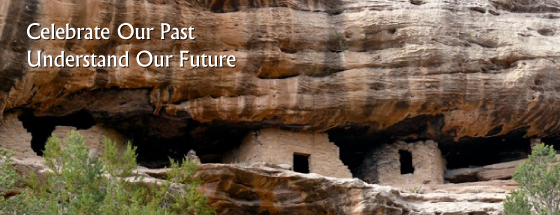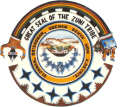
related items
photo galleries
Estevanico arrived at the ancestral Cibolan/Zuni village of Hawikku at least two weeks before Marcos. Unfortunately, Estevanico's bold advances toward the Zuni people got him killed. After learning of Estevanico's death from the surviving members of his party – and likely without seeing these places himself – Fray Marcos returned to Mexico with his own embellished stories about the fabled “Cities.”
These stories led Francisco Vasquez de Coronado to mount a full expedition to explore and claim the fabled lands for Spain. A year later on July 7, 1540, Coronado reached Hawikku with a massive contingent of perhaps two thousand five hundred members, including almost four hundred Spaniards and the rest Amigos Indios – Mexican Indian allies. After a battle that resulted in perhaps forty deaths, the vastly outnumbered Hawikku warriors withdrew under cover of night.
Coronado's force remained in the area for three months before continuing eastward in search of more lands to claim, including a now-documented stop at El Morro. It was, however, forty-three years before the Spanish began to return on a more frequent basis to establish missions at some of the Zuni villages. Due to the remoteness from Spanish settlements along the Rio Grande Valley, Zunis had only minimal contact with the Spanish during their years of colonization in this region.
In 1680, Pueblos in New Mexico including Zuni, planned and carried out a coordinated revolt against Spanish domination. After attacking and burning the mission at Halona Idiwan'a, the populations of all six ancestral Zuni villages sought refuge on the sacred mountain Dowa Yalanne (Corn Mesa) until 1692. After the Spanish made peace with the Zuni, the people came down from Dowa Yalanne and consolidated into a single Pueblo at Halona Idiwan'a, which became known as present-day “Zuni.”
After the Mexican territories gained independence from Spain in 1821, Zuni Pueblo – and the rest of New Mexico – became part of the Republic of Mexico.
After the Mexican-American War, New Mexico including Zuni Pueblo became United States Territory in 1848, with full statehood coming in 1912. However, continual appropriation and abuse of Zuni lands by the Government and unscrupulous land grabbers led to the shrinkage of Zuni's aboriginal territories and confinement to a reservation a small fraction of the original size of Zuni's original land-use areas.
Travel back in time with us
discover more








